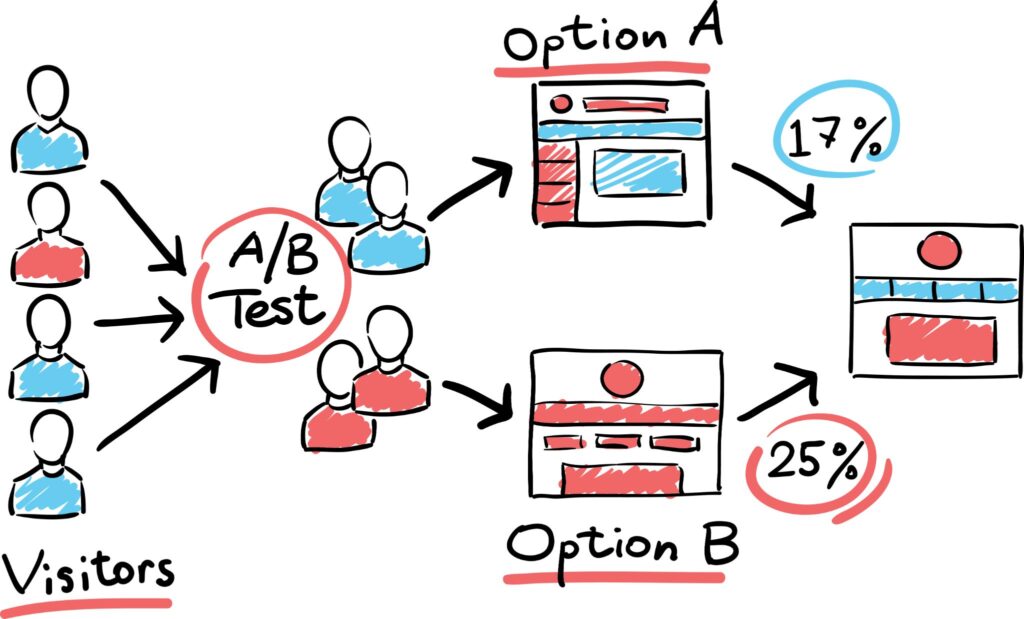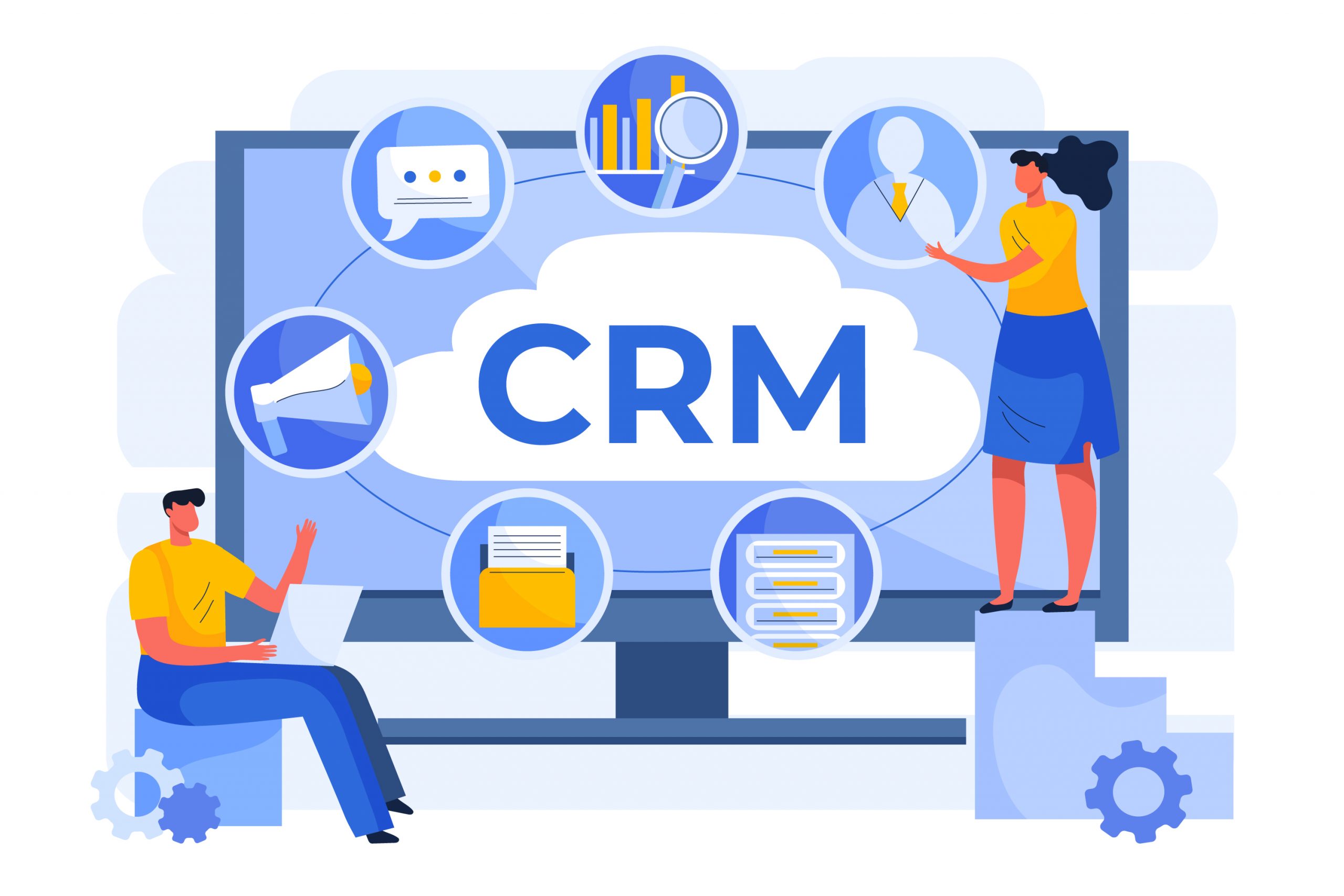
The Power of CRM Marketing and the Need for A/B Testing
In the ever-evolving landscape of digital marketing, Customer Relationship Management (CRM) has become an indispensable tool for businesses of all sizes. It’s no longer just about storing customer data; it’s about understanding your audience, personalizing their experiences, and ultimately, driving conversions. But even the most sophisticated CRM systems are only as effective as the strategies they support. This is where A/B testing comes into play, transforming your CRM marketing efforts from guesswork into a data-driven engine of growth.
CRM marketing encompasses a wide range of activities, from email campaigns and targeted advertising to personalized website experiences and customer service interactions. The core objective is always the same: to build stronger relationships with your customers, nurture them through the sales funnel, and increase their lifetime value. But how do you know which strategies are truly effective? How do you optimize your campaigns for maximum impact? The answer, my friends, lies in the art and science of A/B testing.
A/B testing, also known as split testing, is a method of comparing two versions of a marketing asset (e.g., an email subject line, a website landing page, or a call-to-action button) to determine which one performs better. By systematically testing different variations, you can gather data-driven insights that inform your decision-making and lead to continuous improvement. In the context of CRM marketing, A/B testing empowers you to:
- Optimize Email Campaigns: Test subject lines, content, calls-to-action, and send times to improve open rates, click-through rates, and conversions.
- Personalize Website Experiences: Tailor website content and offers to specific customer segments based on their behavior and preferences.
- Refine Lead Nurturing Sequences: Experiment with different email sequences, content formats, and timing to guide leads through the sales funnel.
- Improve Customer Segmentation: Refine your customer segmentation strategies by testing different segmentation criteria and measuring their impact on campaign performance.
Without A/B testing, you’re essentially flying blind. You’re making assumptions about what your customers want and hoping for the best. With A/B testing, you’re armed with data, allowing you to make informed decisions that drive real results. You’re not just guessing; you’re learning. You’re not just hoping; you’re optimizing.
Getting Started with A/B Testing in CRM Marketing
Embarking on the journey of A/B testing in CRM marketing might seem daunting at first, but with a structured approach, it can be a remarkably rewarding process. Here’s a step-by-step guide to help you get started:
1. Define Your Objectives and KPIs
Before you even think about creating variations, you need to clearly define your objectives. What are you hoping to achieve with your A/B test? Are you aiming to increase email open rates, improve click-through rates, boost conversion rates, or reduce customer churn? Your objectives will guide your testing strategy and help you determine which metrics to track.
Once you’ve established your objectives, identify the Key Performance Indicators (KPIs) that will measure your success. For example, if your objective is to increase email open rates, your KPI would be the percentage of recipients who open your email. Other common KPIs include click-through rates (CTR), conversion rates, bounce rates, and revenue per customer.
2. Identify Areas for Testing
Now, it’s time to pinpoint the specific areas within your CRM marketing efforts that you want to test. Consider areas such as:
- Email Subject Lines: Experiment with different subject lines to see which ones grab your audience’s attention and encourage them to open your emails.
- Email Content: Test different email content formats, including text-based emails, image-rich emails, and video emails.
- Calls-to-Action (CTAs): Experiment with different CTA buttons, wording, and placement to see which ones drive the most clicks and conversions.
- Landing Pages: Test different landing page designs, content, and forms to optimize the user experience and increase conversion rates.
- Segmentation Strategies: Test different customer segmentation strategies to see which segments respond best to your marketing messages.
- Send Times: Experiment with different send times to determine when your audience is most likely to engage with your emails.
Prioritize the areas that have the greatest potential impact on your objectives. Start with the elements that are most likely to influence your KPIs.
3. Formulate a Hypothesis
Before you launch your A/B test, it’s crucial to formulate a hypothesis. A hypothesis is an educated guess about which variation will perform better and why. For example, your hypothesis might be: “Changing the email subject line to include the customer’s name will increase open rates.”
Formulating a hypothesis forces you to think critically about the factors that influence customer behavior and helps you to understand the underlying reasons behind your test results. It also provides a framework for analyzing your data and drawing meaningful conclusions.
4. Create Variations
Once you’ve identified the areas for testing and formulated your hypothesis, it’s time to create your variations. This involves creating two or more versions of the element you’re testing. For example, if you’re testing email subject lines, you would create two or more different subject lines.
When creating variations, focus on testing one element at a time. This will make it easier to isolate the impact of each variation and draw accurate conclusions. Avoid making multiple changes in a single test, as this can make it difficult to determine which change is responsible for the results.
5. Implement Your A/B Test
With your variations created, it’s time to implement your A/B test. Most CRM platforms and email marketing tools offer built-in A/B testing features that make this process relatively straightforward. These tools typically allow you to:
- Select Your Target Audience: Choose the segment of your customer base that you want to include in your test.
- Define Your Test Duration: Determine how long you want your test to run. The duration of your test will depend on factors such as your sample size and the expected difference in performance between the variations.
- Allocate Traffic: Decide how to split your audience between the variations. Typically, you’ll split your audience evenly between the variations, but you can also allocate more traffic to the control version if you want to be more conservative.
- Launch Your Test: Once you’ve configured your test settings, launch your test and let it run for the specified duration.
6. Analyze Your Results
After your A/B test has run for the specified duration, it’s time to analyze your results. Your CRM platform or email marketing tool will provide you with data on the performance of each variation, including open rates, click-through rates, conversion rates, and any other KPIs you’ve defined.
When analyzing your results, pay close attention to statistical significance. Statistical significance indicates the likelihood that the difference in performance between the variations is not due to random chance. A statistically significant result means that you can confidently conclude that one variation performed better than the other.
If your results are statistically significant, identify the winning variation and implement it in your CRM marketing campaigns. If the results are not statistically significant, you may need to run the test for a longer duration or increase your sample size.
7. Iterate and Optimize
A/B testing is not a one-time activity; it’s an ongoing process of iteration and optimization. Once you’ve implemented the winning variation, continue to test other elements of your CRM marketing campaigns. Always be looking for opportunities to improve your results.
As you gather more data and insights, you’ll gain a deeper understanding of your audience and what resonates with them. This knowledge will empower you to create more effective marketing campaigns and drive even greater results.
Advanced A/B Testing Strategies for CRM Marketing
Now that you have a solid understanding of the basics of A/B testing in CRM marketing, let’s delve into some advanced strategies that can help you take your testing efforts to the next level:
1. Multivariate Testing
While A/B testing focuses on comparing two versions of a single element, multivariate testing allows you to test multiple elements simultaneously. This can be a powerful way to identify the optimal combination of elements that drive the best results.
For example, you could use multivariate testing to test different email subject lines, email content, and calls-to-action all at once. This would allow you to see which combination of elements performs best.
However, multivariate testing requires a larger sample size than A/B testing, as you’re testing more variations. It’s also more complex to set up and analyze. Therefore, it’s best suited for testing elements that have a significant impact on your KPIs.
2. Segmentation-Based Testing
Segmentation-based testing involves tailoring your A/B tests to specific customer segments. This allows you to personalize your marketing messages and offers to different groups of customers based on their behavior, preferences, and demographics.
For example, you could create different email subject lines for customers who have purchased from you before versus those who are new to your brand. Or, you could test different landing page designs for customers who are visiting your website from different sources.
Segmentation-based testing can be highly effective, as it allows you to deliver more relevant and engaging marketing messages to each customer segment. However, it also requires a good understanding of your customer data and the ability to segment your audience effectively.
3. Personalization-Focused Testing
Personalization is a key trend in modern CRM marketing, and A/B testing is essential for optimizing your personalization efforts. You can use A/B testing to experiment with different personalization tactics, such as:
- Dynamic Content: Displaying different content to different customers based on their behavior and preferences.
- Personalized Recommendations: Recommending products or services to customers based on their past purchases or browsing history.
- Behavioral Triggers: Sending automated emails to customers based on their actions, such as abandoning a shopping cart or browsing a specific product category.
Personalization-focused testing can help you to create more relevant and engaging customer experiences, leading to higher conversion rates and increased customer loyalty.
4. Mobile Optimization Testing
With the increasing use of mobile devices, it’s crucial to optimize your CRM marketing campaigns for mobile users. A/B testing can help you to identify the best mobile-friendly designs, content, and calls-to-action.
For example, you could test different email layouts, landing page designs, and form fields to see which ones perform best on mobile devices. You could also test different mobile-specific offers and promotions.
Mobile optimization testing is essential for ensuring that your CRM marketing campaigns are accessible and engaging to all of your customers, regardless of the device they’re using.
5. Long-Term Testing and Trend Analysis
Don’t just focus on short-term wins. Implement long-term A/B tests and analyze the trends over time. This will help you to identify patterns and insights that you might miss with shorter tests.
For example, you could run a long-term A/B test on your email subject lines, tracking open rates over several months. This would allow you to see how different subject lines perform over time and identify any seasonal trends or changes in customer behavior.
Long-term testing and trend analysis can provide valuable insights that can inform your CRM marketing strategy and help you to achieve sustainable growth.
Tools and Platforms for A/B Testing in CRM Marketing
Fortunately, there are many tools and platforms available to help you implement A/B testing in your CRM marketing efforts. Here are some of the most popular options:
1. CRM Platforms with Built-in A/B Testing Features
Many leading CRM platforms, such as Salesforce, HubSpot, and Zoho CRM, offer built-in A/B testing features. These features typically allow you to test email subject lines, email content, and landing pages directly within the platform. This can simplify the testing process and make it easier to track your results.
2. Email Marketing Platforms with A/B Testing Capabilities
Email marketing platforms, such as Mailchimp, Constant Contact, and GetResponse, also offer robust A/B testing capabilities. These platforms allow you to test a wide range of email elements, including subject lines, content, calls-to-action, and send times. They also provide detailed analytics and reporting to help you track your results.
3. Website Optimization Tools
Website optimization tools, such as Google Optimize, Optimizely, and VWO, are specifically designed for A/B testing website elements. These tools allow you to test different website designs, content, and calls-to-action. They also provide advanced features such as multivariate testing and personalization.
4. Landing Page Builders
Landing page builders, such as Unbounce, Instapage, and Leadpages, are designed to help you create and optimize landing pages for conversions. These tools often offer built-in A/B testing features to help you test different landing page designs and content.
5. Analytics Platforms
Analytics platforms, such as Google Analytics, can be used to track the performance of your A/B tests and gain insights into customer behavior. These platforms can provide you with data on website traffic, conversion rates, and other key metrics.
Common Mistakes to Avoid in CRM Marketing A/B Testing
While A/B testing can be a powerful tool for optimizing your CRM marketing efforts, it’s important to avoid common mistakes that can hinder your progress. Here are some pitfalls to watch out for:
1. Testing Too Many Elements at Once
As mentioned earlier, it’s crucial to test one element at a time. Testing too many elements simultaneously can make it difficult to isolate the impact of each change and draw accurate conclusions. Stick to testing one element per test to ensure reliable results.
2. Not Running Tests Long Enough
Make sure to run your A/B tests for a sufficient duration. Running a test for too short a time can lead to inaccurate results, especially if there are fluctuations in your data due to external factors. The duration of your test will depend on factors such as your sample size and the expected difference in performance between the variations. It’s generally recommended to run your tests until you achieve statistical significance.
3. Not Defining Clear Objectives and KPIs
Without clear objectives and KPIs, you won’t know what you’re trying to achieve with your A/B test. This can lead to wasted time and effort. Before you launch your test, define your objectives and identify the KPIs that will measure your success.
4. Not Analyzing Your Results Thoroughly
Don’t just look at the raw data. Analyze your results thoroughly to understand the underlying reasons behind your findings. Look for patterns, trends, and insights that can inform your future testing efforts. Consider factors such as customer segmentation, device type, and traffic source when analyzing your results.
5. Jumping to Conclusions Too Quickly
Don’t jump to conclusions based on preliminary results. Wait until your test has reached statistical significance before implementing the winning variation. Premature conclusions can lead to incorrect decisions and wasted resources.
6. Not Documenting Your Tests
Keep a detailed record of your A/B tests, including your objectives, hypothesis, variations, results, and conclusions. This documentation will help you to track your progress, learn from your mistakes, and replicate successful tests in the future.
7. Ignoring Statistical Significance
Statistical significance is crucial for determining the validity of your test results. Always pay attention to the statistical significance of your results before making any decisions. If your results are not statistically significant, it means that the difference in performance between the variations may be due to random chance.
Conclusion: Embracing A/B Testing for CRM Marketing Success
In conclusion, A/B testing is a critical component of any successful CRM marketing strategy. By systematically testing different variations, you can gather data-driven insights that inform your decision-making and lead to continuous improvement. From optimizing email campaigns and personalizing website experiences to refining lead nurturing sequences and improving customer segmentation, A/B testing empowers you to unlock the full potential of your CRM system and drive explosive growth.
By following the strategies outlined in this guide, you can get started with A/B testing in your CRM marketing efforts and begin to reap the rewards. Remember to define your objectives, formulate a hypothesis, create variations, implement your tests, analyze your results, and iterate on your efforts. Embrace the power of data, and you’ll be well on your way to achieving remarkable results.
The journey of A/B testing is one of continuous learning and improvement. As you gather more data and insights, you’ll gain a deeper understanding of your audience and what resonates with them. This knowledge will empower you to create more effective marketing campaigns and drive even greater results. So, take the plunge, start testing, and watch your CRM marketing efforts soar!

